March 6th, 2014
 Dentistry has never been at a more exciting time when it comes to the rise of technology to help service the needs of the patient. One of the best technological developments is the iTero digital scanner. How does an iTero work, and how can it help you?
Dentistry has never been at a more exciting time when it comes to the rise of technology to help service the needs of the patient. One of the best technological developments is the iTero digital scanner. How does an iTero work, and how can it help you?
iTero enables doctors to take a 3D digital scan of a patient’s teeth and bite so adjustments can be made digitally for the use of several important dental procedures. Let’s first start with how it works.
With the use of a small, handheld scanner, a dentist scans your teeth and makes sure to capture every angle possible. In some cases, the doctor must scan the entire mouth, while in others, only a section of the teeth. Either case, the process is very similar with the handheld device scanning every angle of teeth.
Once completed, the images are sent to the computer and rendered to create the composite image, which combines all angles to create a 3D model of your teeth. Once the image has loaded, doctors can use this to create everything from an Invisalign mold to full tooth implants. Here’s what procedures iTero helps the most:
Invisalign:
With iTero, Invisalign has never been more accurate. With the 3D model of your teeth, doctors are able to manipulate your current teeth structure and bite to determine what will best help your teeth align. There’s no guessing when you can employ iTero to structure your teeth the way you would hope they looked. iTero will help create the several molds that would guide the patient through the teeth alignment process. Then, once approved, the digital files can be sent to a lab for mold creation. The process is faster for the doctor, the lab, but most importantly, the patient.
Restoration:
If a tooth is in bad shape and needs to be replaced or crowned, iTero is a great help. First, the doctor takes a scan of the tooth in question and the area around it. Once loaded, the doctor can review the scan and determine what would work as a solution. For a new tooth or crowns, the scan is sent to a lab where a model can be fabricated using the digital technology. Once created, the tooth is sent back to the office where the dentist is able to restore your tooth.
Even more interesting, doctors now have the capability of creating the restored tooth mold the same day with a chair side E4D Mill. First, a scan is made, then the doctor can design the new tooth mold on their computer and print the tooth in a very short amount of time. For implants, the process does take a little longer to complete and is needed to be sent to the lab. However for smaller needs, the E4D Mill is a great help.
Orthodontic and TMJ
Because the iTero is able to take a full scan of the teeth, it can be used to assist with orthodontic of TMJ issues. The full scan can be taken and reviewed by technicians to determine the alignment of your bite and if any steps need to be taken to help restore the functionality of your teeth and jaw.
Technology has come a long way since the start of dentistry. We’re excited for future advancements, and even more excited for the advancements happening today. With the use of iTero, we are able to help our patients get the service they need in a timely manner with exact precision. Here at Water Tower Dental, we use iTero specifically for Invisalign, but by taking advantage of another piece of technology we can help with Restoration, Orthodontic and TMJ. So if you're looking for more information on how we use technology in the office, and what it can do for your teeth, don't hesitate to contact us today!
February 27th, 2014
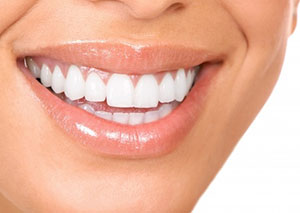 Even as a dental team, we can understand that it’s hard to maintain a solid routine of teeth brushing throughout the day. Many people aren’t home when they eat lunch, thus it makes it hard to brush your teeth after. If you stay at your partner’s place, or a relative’s, and you realize you forgot your toothbrush, what do you do? While brushing your teeth is the first line of defense against plaque build up and cavities, sometimes you need to look for alternative ways to clean your teeth.
Even as a dental team, we can understand that it’s hard to maintain a solid routine of teeth brushing throughout the day. Many people aren’t home when they eat lunch, thus it makes it hard to brush your teeth after. If you stay at your partner’s place, or a relative’s, and you realize you forgot your toothbrush, what do you do? While brushing your teeth is the first line of defense against plaque build up and cavities, sometimes you need to look for alternative ways to clean your teeth.
When it comes to brushing your teeth, the most important aspect of your toothbrush is the abrasive touch that helps loosen and remove plaque and debris. The slightly abrasive surface is perfect for scraping off any particles that shouldn’t be around. If you want to have a good set of clean teeth and you’re missing a toothbrush, you can use several common household items to assist you.
Paper Towel
Use a small square of a paper towel and add a small dab of toothpaste. These days, paper towels are strong enough that they won’t fall apart if they get a little moist. You can easily use if to “buff” your teeth so to speak. This is a simple method that works fairly well, though it can be hard to reach far back in the mouth with a paper towel.
Q-Tip
However, a Q-tip has a little better reach and can also be used as an alternative method to brushing your teeth. Again, use a small dab of toothpaste on the tip of the Q-tip. With a Q-tip, we do recommend brushing softer than you normally would. The cotton tip is delicate and can begin to fall apart if used too much.
Finger
The most common method to brush without a brush is a simple finger. Make sure to wash your hands thoroughly first, you don’t want to be sending more bacteria into your mouth than you need to. Use an index finger to softly loosen plaque and debris from your teeth. This method is simple but only so effective.
After any of these options, rinse your mouth out thoroughly with water. The water is a great way to flush all loose- and some not-so-loose- plaque out of your mouth; try rinsing and spitting several times for maximum effect.
Of course, if you don’t have your toothbrush, you should see if the people you are staying with are willing to share any floss or mouthwash. Both are not considered an alternative to your toothbrush, but if you can use both products on a night without your brush, you’re well on your way to a clean smile.
If none of these products are available, there is a simple method to employ.
Gargling salt-water is a great way to flush bacteria our of your mouth. Salt’s natural anti-bacterial qualities can help eliminate some of the plaque in your mouth. Just use a teaspoon of salt for every 8 ounces of water. This is the least one might be able to do on a night away from their oral hygiene products.
The best method we recommend for long-lasting, bright smiles is to always come prepared. Try to always remember a toothbrush and some floss. Keep an extra brush in your backpack or purse. Travel toothbrushes are available and come in compact packaging for mobility. Brushing, flossing, and mouthwash can go a long way when caring for your teeth, and we recommend staying diligent in your practices.
If you have any more questions, don’t hesitate to contact Water Tower Dental Care today.
February 20th, 2014
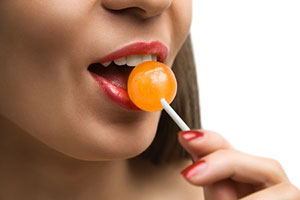 We’ve all been taught since a very young age that candy is the ultimate destroyer against teeth. However, new candies developed by scientists are turning that old story around. Now, there are several new candies (along with some older) that have beneficial attributes.
We’ve all been taught since a very young age that candy is the ultimate destroyer against teeth. However, new candies developed by scientists are turning that old story around. Now, there are several new candies (along with some older) that have beneficial attributes.
Scientists in Berlin have recently created candy that contains good bacteria that fights against certain cavity-building bacteria. The main bacteria that cultivate in your mouth and eats away at the surface of your teeth, dissolving enamel and creating cavities, is a bacterium called Mutans streptococci. Scientists have found that a different bacterium called Lactobacillus paracasei is able to fight against and reduce the levels of the bad bacteria in the mouth. In a study testing different levels of the good bacteria in pieces of candy compared to a control group with normal candy, scientists were able to reduce the levels of Mutans streptococci by 75% in the groups with good bacteria candy compared to the control. You can find the full study published in the Probiotics and Antimicrobial Proteins.
Though that candy might significantly help your teeth, you probably won’t find it in the sweets aisle anytime soon. However, there are other candies, available today, that are definitely better for your teeth than others. If you are to eat candy, here’s the kind we recommend.
ADA-approved Gums
While most chewing gums can hurt your teeth by allowing harmful sugars and acids to build in your mouth while consistently chewing, there are actually a few good chewing gums. Recently the ADA has approved certain gums for their beneficial elements to teeth. Most importantly, all ADA approved chewing gums are sugarless and sweetened with artificial sweeteners such as aspartame or sorbitol. These gums are able to increase the flow of saliva without creating a harmful environment for your teeth. In fact, the increased flow of saliva can help flush away previous acids and debris. Look for an ADA seal on the gum to be sure you’re chewing the right kind.
Sugar-free Lollipops
Similar to the ADA-approved chewing gum, sugar-free candies help increase the flow of saliva, which can actually flush out the mouth of bad bacteria and help prevent cavities. If you need a hard candy, we wouldn’t recommend anything other than sugar-free. However, be aware that these candies can still hurt your teeth if you bite down on them, so make sure to consume the candy slowly and save your teeth from unnecessary damage.
Dark Chocolate
Though dark chocolate is loaded with sugar, and not the best your teeth, enough studies have shown that the candy contains a rich amount of antioxidants that are good for the rest of your body, especially your heart. Sometimes it’s okay to sacrifice a minute of sugar in your mouth for the rest of your body. Just follow our advice as to how to consume sugar and you should be fine.
Of course, there are plenty of candies you can choose that are terrible for your teeth. Chewy candies and sour candies are definitely the worst as they can get caught in your teeth for days between the backs of molars. As well, they contain high levels of acid that can quickly break down tooth enamel and produce cavities. Avoid these candies at all costs.
Remember, the best defense to fight those bad bacteria and preventing cavities is practicing proper oral hygiene. Brush at least twice a day and floss once a day. You’ll find that a little piece of candy every so often won’t be the worst thing in the world. Just be careful, though Water Tower Dental loves to see all of our patients’ smiling faces as often as possible, but we hate when we have to inform them of cavities. Keep your teeth clean and your smile bright.
February 13th, 2014
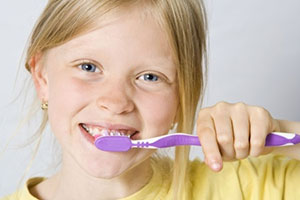 Do you have trouble convincing your children it’s time to brush their teeth? Many kids find it difficult to want to scrub their tiny molars as they see it just like any other chore. However, with the right attitude you can make brushing teeth a fun activity that your children get excited to do. Healthy teeth in young children are extremely important, so try out a few of these tips next time you’re brushing with your kids.
Do you have trouble convincing your children it’s time to brush their teeth? Many kids find it difficult to want to scrub their tiny molars as they see it just like any other chore. However, with the right attitude you can make brushing teeth a fun activity that your children get excited to do. Healthy teeth in young children are extremely important, so try out a few of these tips next time you’re brushing with your kids.
Start With Variety
An easy way to get a child excited about grabbing that toothbrush is by giving them an option. Buy an assortment pack of toothbrushes that are multicolored or have different characters from their favorite story or movie on them. Every time they go to grab their toothbrush, they get to choose a new fun color. Already, the child feels as if they’re in control and that they can make brushing their teeth just a little more fun.
Brush With Them
Children learn from a good example, so at first, always brush your teeth with your children. Show them how fun it can be. A client of ours once told us of how his grandfather used to brush his teeth with him when he was a child. Halfway through the brushing, his grandfather would always stop and show him a big, foamy smile. That stuck with him, and every time he brushed his teeth, even as an adult, he would give himself a big foamy smile halfway through the brushing.
Tasty Toothpaste
Many toothpaste companies make toothpaste specific for children that often have a sweeter taste that a child can enjoy. Look for safe and non-abrasive toothpaste approved by the ADA.
Get the Timer
Any parent knows children have a tough time staying still for more than a few seconds. To help condition your child to brush their teeth for more than a blink of the eye, grab a timer. At first, set the timer to twenty seconds and challenge your child to brush until the timer goes off. Gradually increase the time until you’ve reached two minutes.
Dance While You Brush
If your children don’t seem to take to the timer experience, find a fun song they love that’s around the two-minute mark. Let them listen to the song as they brush their teeth and let them know they can’t stop until the song is over. Let them get funky with the song, even dance with them a little, just make sure they keep brushing their teeth.
Reward With a Sticker
A simple reward for a job well done is a sticker. It can easily be put on a board or poster that the child can then see and feel proud of whenever they finish their brushing.
It’s important to start your children early with proper oral hygiene as they adapt habits much easier when they’re younger. If you’re consistent with your education and participation with your teeth brushing, it will have a lasting effect on their care for their teeth. Make sure to consider taking your child to the dentist as early as age 2. If you have any more questions, contact Water Tower Dental today.
 Dentistry has never been at a more exciting time when it comes to the rise of technology to help service the needs of the patient. One of the best technological developments is the iTero digital scanner. How does an iTero work, and how can it help you?
Dentistry has never been at a more exciting time when it comes to the rise of technology to help service the needs of the patient. One of the best technological developments is the iTero digital scanner. How does an iTero work, and how can it help you?
 Even as a dental team, we can understand that it’s hard to maintain a solid routine of teeth brushing throughout the day. Many people aren’t home when they eat lunch, thus it makes it hard to brush your teeth after. If you stay at your partner’s place, or a relative’s, and you realize you forgot your toothbrush, what do you do? While brushing your teeth is the first line of defense against plaque build up and cavities, sometimes you need to look for alternative ways to clean your teeth.
Even as a dental team, we can understand that it’s hard to maintain a solid routine of teeth brushing throughout the day. Many people aren’t home when they eat lunch, thus it makes it hard to brush your teeth after. If you stay at your partner’s place, or a relative’s, and you realize you forgot your toothbrush, what do you do? While brushing your teeth is the first line of defense against plaque build up and cavities, sometimes you need to look for alternative ways to clean your teeth. We’ve all been taught since a very young age that candy is the ultimate destroyer against teeth. However, new candies developed by scientists are turning that old story around. Now, there are several new candies (along with some older) that have beneficial attributes.
We’ve all been taught since a very young age that candy is the ultimate destroyer against teeth. However, new candies developed by scientists are turning that old story around. Now, there are several new candies (along with some older) that have beneficial attributes. Do you have trouble convincing your children it’s time to brush their teeth? Many kids find it difficult to want to scrub their tiny molars as they see it just like any other chore. However, with the right attitude you can make brushing teeth a fun activity that your children get excited to do. Healthy teeth in young children are extremely important, so try out a few of these tips next time you’re brushing with your kids.
Do you have trouble convincing your children it’s time to brush their teeth? Many kids find it difficult to want to scrub their tiny molars as they see it just like any other chore. However, with the right attitude you can make brushing teeth a fun activity that your children get excited to do. Healthy teeth in young children are extremely important, so try out a few of these tips next time you’re brushing with your kids.
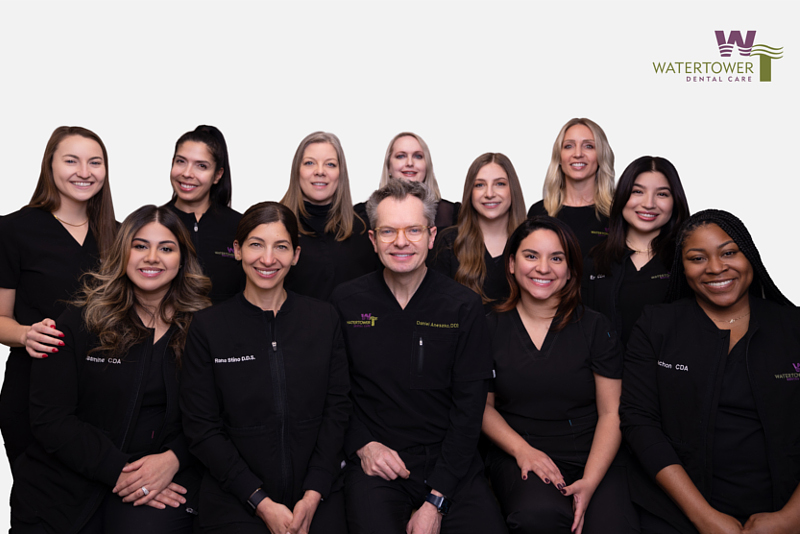


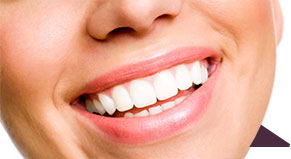
 Website Powered by Sesame 24-7™
Website Powered by Sesame 24-7™